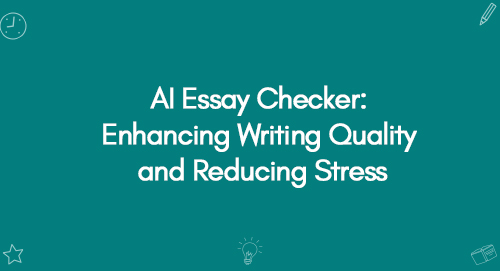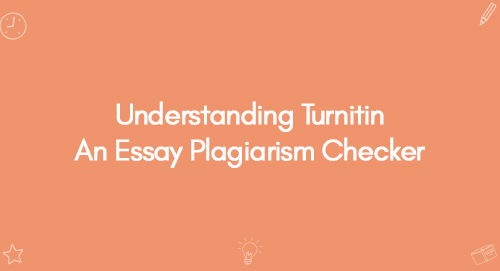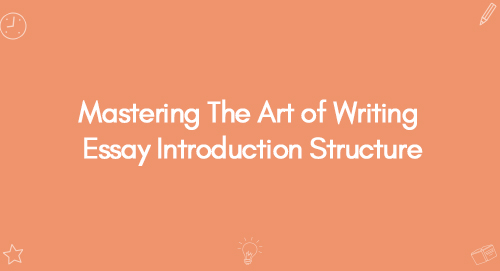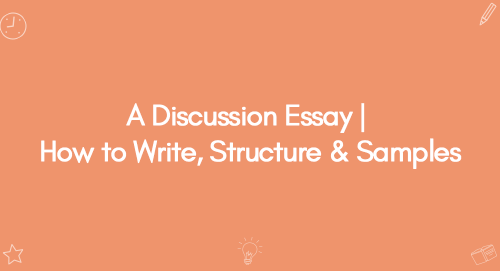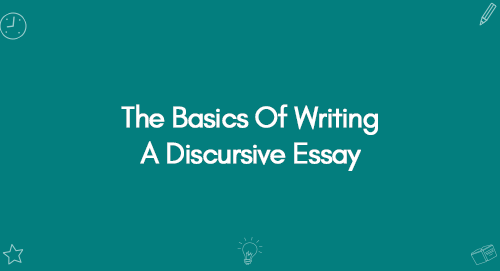How To Write A Discursive Essay | Essential Tips With Examples
How To Write A Discursive Essay | Essential Tips With Examples

How to Write An Appealing 500-Word Essay | Structure and Tips
November 15, 2022
How To Write A Critical Analysis Essay? The Ultimate Guide
January 11, 2023A discursive essay is a piece of academic writing that explores a controversial topic. It can be written from a person or an impersonal point of view, and it often includes arguments for and against the issue. In this article, we'll look at how to write a discursive essay, discursive essay topic ideas, and discursive essay examples.
What is a Discursive Essay?
In a discursive essay the writer explores a controversial topic. A discursive essay aims to explore all sides of an issue to understand it better. This essay often includes arguments for and against the issue being discussed. Discursive essays can be written from a personal or impersonal point of view.
Discursive essays differ from other essays, such as argumentative ones, because they do not seek to persuade the reader to take a specific position on the issue being discussed. Instead, their goal is merely to explore all sides of the issue so the reader can decide what they believe.
Discursive essays are often assigned in high school and college English classes. They are also common in competitive exams such as the IELTS and TOEFL.
How to Write a Discursive Essay
There are two main types of discursive essays: expository and persuasive.
Expository discursive essays present both sides of an issue without taking a position.
Persuasive discursive essays take a position on an issue but still present both sides of the argument.
When writing a discursive essay, it's essential to:
1) Choose a topic that you care about or are interested in
2) Do your research on both sides of the issue
3) Present both sides of the argument objectively
4) Use evidence to support your claims
5) Come to a conclusion based on your research
Check these discursive essay examples for a better understanding.
Discursive essay example 1: Ethics and Corporate Social Responsibility in Tourism
Discursive essay example 2: Emotional Intelligence and Leadership
How to Structure a Discursive Essay
Discursive essays, like other essays has following main components;
Introduction
The introduction to a discursive essay should be neutral. It should not express any opinions or take any sides. The purpose of the introduction is to offer background information on the topic and to state the main argument.
Here a discursive essay introduction example;
Emotional intelligence (EI) is the ability of an individual to identify emotions that belong to themselves or others. It is also the ability of an individual to distinguish between different feelings and label them properly. Additional EI is also the ability to use emotional information to guide an individual’s thinking and behaviour. Studies conducted by various researchers have shown that individuals that have a high EI have better mental health, model job performance and have more effective leadership skills (Goleman, 1998; Salovey et al, 2004; Coleman, 2008). At present, there are three main models of EI known as:
Ability model
Mixed model
Trait model
Main Body Paragraphs
The main body paragraphs of a discursive essay should each focus on a different perspective. For example, if the essay is about capital punishment, one paragraph could discuss the arguments for capital punishment, while another could discuss the arguments against capital punishment. Each paragraph should be supported with evidence and examples.
Conclusion
The conclusion of a discursive essay should sum up the main points of both sides of the argument and state which side is more convincing. However, the conclusion should not express any personal opinion.
Referencing
All sources of information used in a discursive essay must be referenced. It includes statistics, data, and other people's opinions. All references should be included in a list at the end of the essay.
Language
When writing a discursive essay, it is essential to use formal language. This means avoiding contractions (e.g., don't, can't), using third-person pronouns (e.g., he, she, it), and preventing informal words and phrases (e.g., stuff, things).
Argumentative vs. Discursive Essays
It's important not to confuse discursive essays with argumentative essays. Both types of essays explore an issue from different perspectives, but discursive essays do not seek to persuade the reader to take a specific position on an issue. Argumentative essays do seek to persuade the reader, although they present both sides of the argument.
How to Write an Introduction for a Discursive Essay
- Start with a general statement about the issue at hand.
- Introduce the two sides of the argument.
- State your own opinion on the issue.
- Outline the main points you will discuss in your essay.
- Introduce the topic of your essay clearly and concisely.
- Engage the reader by making your introduction interesting and thought-provoking.
- Avoid using clichés or overly-broad statements in your introduction.
- Keep your introduction relatively short, as you will need to save most of your paper for developing your argument.
9 tips for Writing a Discursive Essay
These 9 tips will help you write the best discursive essay of your life.
Picking a Side
When writing a discursive essay, you need to decide whether you want to take a pro stance, a con stance, or remain neutral. Once you’ve decided which side you want to take, you can start gathering evidence to support your argument.
Anticipating Objections
As you’re writing your essay, it’s important to anticipate objections that people might have to your argument. This will help to make your argument more convincing, as you’ll be able to address these objections head-on.
Structuring Your Essay
A discursive essay should be structured similarly to any other type of essay, with an introduction, body paragraphs, and a conclusion. However, a discursive essay's body paragraphs will focus on presenting different points of view on the topic at hand.
Introducing the Topic
The introduction of a discursive essay should give an overview of the main points discussed in the essay's body. It should also clearly state which side of the argument the writer is taking.
Presenting Different Points of View
A discursive essay's body paragraphs should each concentrate on one key concept. These arguments should be made objectively, without favoring either side of the debate.
Addressing Counterarguments
As well as presenting different points of view, the body paragraphs of a discursive essay should also address counterarguments. It means considering arguments that oppose your own and finding ways to refute them.
Using Reliable Sources
When writing a discursive essay, it is essential to use reliable sources of information. This means that you should only use sources that are from reputable organizations or individuals. Additionally, you should ensure that your sources are up-to-date and relevant to your argument.
Drawing Conclusions
The conclusion of a discursive essay should sum up the main points discussed throughout the essay's body. It should also restate the writer’s position on the issue at hand and explain why this position is valid.
Editing and Proofreading
Once you’ve finished writing your discursive essay, editing and proofreading it carefully before submitting it for assessment is essential. This will help ensure that your essay is clear, concise, and free from errors.
Conclusion
A discursive essay is an academic essay that examines both sides of an issue. These essays are typically assigned in high school or college English classes. When writing one, it's essential to research both sides of the topic, present both sides objectively, use evidence to support your claims, and come to a conclusion based on your research.


